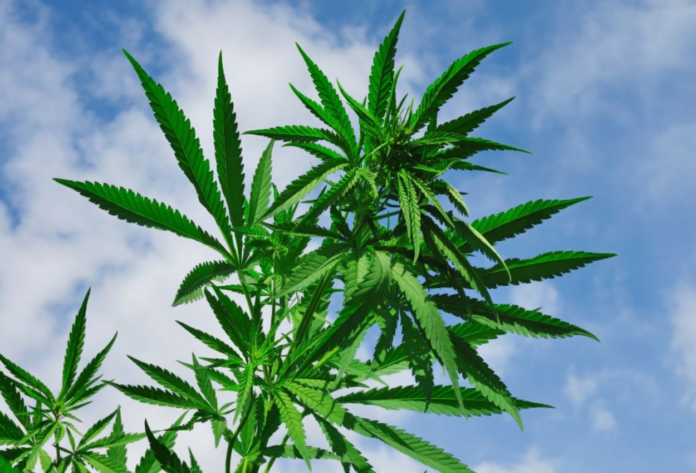In November 2023, seven states decriminalized the use of small amounts of non-medical cannabis, or marijuana, as it is commonly known today. This means that possession of small amounts carries penalties similar to those of a traffic stop. Additionally, non-medical marijuana has been legalized in 24 U.S. states as well as Guam, the District of Columbia, the Virgin Islands, and the Northern Mariana Islands (in the Pacific where the US has sovereignty). However, possession of marijuana is still prohibited.
Now that we have that out of the way, there are many benefits gained from the use of cannabis, but first, let’s take a look at what compounds are found in modern-day cannabis and how they work together to benefit the user.
Components
- Cannabinoids
Cannabinoids are naturally found in cannabis. They are like puzzle pieces that work with your brain and nervous system to help relieve your body of pain, either relaxing or energizing you. Two significant components of cannabinoids are CBD and THC, along with others.
- Terpenes
Terpenes give cannabis its particular smell of pine, citrus, or lavender and taste. They are akin to the essential oils of the marijuana plant. They play a significant role in how cannabis makes you feel.
For example, Myrcene has an earthy smell and is used for its relaxing effects. Limonene is lemony in scent and boosts one’s mood, helping one feel energized. Pinene has a pine scent that helps with focus and memory. All work together to enhance the effects of cannabinoids, as described above.
- Flavonoids
Flavonoids give cannabis its color and are the component that offers health benefits as they contain anti-inflammatory and antioxidant properties.
- Other Components
Other components of cannabis include chlorophyll, which gives the plant its color and its bitter taste; small amounts of waxes and fatty acids; moisture; and plant matter, including fibers.
These components all work together as a team to create a complete experience.
Health Benefits of Cannabis
As mentioned above, cannabis offers relief to several health conditions. Let’s examine the top five.
- Pain Relief
Strains that are high in CBD and THC can help with the relief of chronic pain such as arthritis, neuropathic pain, and fibromyalgia. This research letter published in the JAMA (Journal of the American Medical Association) indicates that more than half of the people who participated in a study to determine the effects of cannabis use to manage pain reported that doing so “led them to decrease the use of prescription opioid, prescription nonopioid, and over-the-counter pain medications, and less than 1% reported that use of cannabis increased their use of these medications.”
Yes, that was a small study, but it was significant nonetheless.
- Anxiety, Stress Reduction, and PTSD
Strains rich in CBD can provide relief from anxiety and stress. Everyone’s brain produces serotonin. When CBD interacts with serotonin, the combination incites feelings of calmness and well-being without feeling the “high” that comes with THC.
THC can help one relax in small doses. However, higher dosages can create anxiety in some people.
This report from The National Library of Medicine shows a group of participants who experienced a decrease in anxiety with the use of CBD. T defines what PTSD is in detail and then posits that “this literature review on medical cannabis … found that CBD may help reduce PTSD symptoms.”
- Sleep Aid
Strains that are high in sedative terpenes like myrcene can help with sleep disorders like insomnia and others. The Sleep Foundation has published an article entitled “Cannabis for Sleep” that goes into detail on cannabis as a sleep aid, ending the article with who might benefit more: regular users of cannabis or casual users.
- Anti-inflammatory and Neuroprotective Properties
Cannabinoids, especially CBD and CBG (a minor component of cannabis), offer solid anti-inflammatory benefits to those with Crohn’s disease, multiple sclerosis, and even psoriasis. Marijuana may also help with brain health by protecting it. Research suggests it may also help treat Alzheimer’s and Parkinson’s disease and epilepsy.
Frontiers in Pharmacology has published this article explicitly stating: “Emerging preclinical research studies demonstrate that CBD can exhibit neuroprotective effects due to its anti-oxidant and anti-inflammatory properties, which may potentially treat different neurodegenerative diseases ( (Hampson et al., 1998; Esposito et al., 2006; Esposito, Scuderi et al., 2007).”
- Nausea and Appetite Stimulation
Have you ever heard of the munchies? Marijuana has long been known to reduce nausea and increase appetite. This makes an excellent tool for patients who are going through chemotherapy or people with HIV/AIDS. The cannabinoid that works with the brain to control nausea and stimulate hunger is THC.
This article in The Oxford University Press shows various test results under “Outcome Characteristics,” with chemotherapy participants across multiple age groups showing improvement in each testing category.
Of course, smoking is not the only way one can consume cannabis. One can ingest a gummy, vape, or use a tincture. But perhaps that is for another post. The point is, we live in a stressful world with body aches and fitful nights of sleep if we get any! Cannabis seems to be the answer to much of what ails us.
However, cannabis should be used thoughtfully. If a plant can make you go from “I don’t want to do this” to “I got this!” it’s worth a little research. So, research, go slow, and figure out what works best for you. And remember. Marijuana is not as stigmatized as it once was. Now, you can speak with your medical professional without fear of repercussion.
So, here’s to feeling good, one puff (or drop, or gummy!) at a time.


